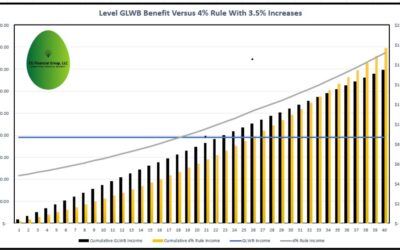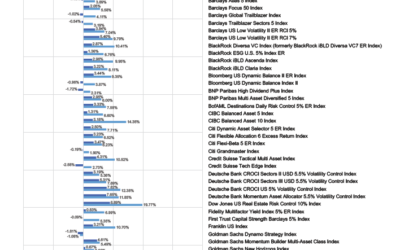I (Charlie) have been doing a lot of “commission splitting” lately. This is where I will do 3-way zoom calls with you and the client, create a full blown retirement income plan (Journeyguide software), and then come back and explain it to the client over one, two, three additional Zoom meetings. This is easily four to ten hours (depending on scenario) of additional work on my part. Hence, the commission split, and hence, the prompting of this article.
My dad, who was the wittiest and toughest person I ever knew, owned a construction business (underground utilities and concrete) for 40-years. As somebody who “dug ditches” since his early teens, he had a way with words that I usually don’t repeat, but I will here. He once told me jokingly, “How do you know when the deal was negotiated fairly for both sides? When both sides of the agreement feel that they have been screwed.” Now, that’s not something that you learn in business school, nor do I condone that method of thinking. He tended to say things for the effect.
Rather, I prefer the thought of both sides feeling that they received a fair deal. That is how you make for happy business partners and a sustainable and reputable business. I do believe that when agents partner with other agents and “split commissions” that there is a structure where – based off my experience – does exactly that; makes both sides feel the deal is fair.
Oftentimes a “junior agent” might seek to partner with a veteran agent. The reasons for this partnership are obvious; if the junior agent cannot get the sale without the help of a veteran agent, it would be silly to not utilize a veteran agent (assuming one is available), even if it means that the junior agent would get less than 100% of the total compensation. As they say, 100% of $0 is ZERO COMPENSATION. By the way, if you are a junior agent and don’t have access to a “veteran agent”, partner with an IMO that will help you with the sale.
A second scenario might be the inverse of the above. This is where a veteran agent will seek to partner with a junior agent. Why would a “rainmaker” want to partner with somebody junior? For the veteran agent to free up time to do what he/she does best – RAINMAKING. Thus, the veteran agent may seek to offload some of the time-consuming legwork to a junior agent.
A third example may have nothing to do with junior versus veteran. It may be a scenario where an insurance agent is partnering with a CPA or an attorney. Many times the CPA has a captive audience and they just need an “insurance expert” to do the case design and also close the case for them.
The above three scenarios are great business scenarios and very smart!!! The above scenarios allow each individual to do what they do best while not trying to do a task that neither person is optimal at, while at the same time the junior advisor (or the CPA/Attorney) is learning from the Veteran Agent. The above three scenarios are efficiency at its finest and what makes our industry’s compensation flexibility such a great thing. However, you must know what a fair “split” arrangement looks like so that neither party feels ripped-off.
So, what is a fair “Split Arrangement”? This is the main topic of this article.
The Million Dollar Round Table (MDRT) was the first – that I know of – to really prescribe a breakdown of what commission splits should look like. I have never had an agent – at least a very seasoned agent – balk at the below structure. A very widely adopted structure. These commission split percentages that they recommended were generally based off the types of services that each agent would provide. The below breakdown is very similar to what the MDRT first came up with except for some slight verbiage changes that we applied. This is merely a guide, but I believe a VERY GOOD guide.
| 20% – Prospect Delivery | This is where the agent has brought the client to the table, whether through past relationships, a referral, or marketing activities. |
| 20% – Data Collection and Delivery | This is where the agent collects all the data needed for the sale (health information, financial information, fact finding) and also delivers material to the client that is needed prior to the sale. |
| 20% – Case Design | This is where the agent designs the strategy, which includes: running illustrations, modeling scenarios, seeking the right prices, organizing the end plan that is to be presented, etc. |
| 20% – Closing The Deal | This is where the “Veteran Agent” comes in many times to “make it rain”. This is where the final presentation/conversation occurs with the clients. This is the inflection point – the case/plan either gets implemented here or dies here!! |
| 20% – Ongoing Service | This is the delivery of the policy, annual reviews, continuous updates for the clients, etc. |
With the above being said, a common approach would be that the veteran helps close the sale. That would mean that the veteran could easily justify getting 20% and the “junior agent” getting 80%. If the veteran also did case design, then he/she might ask for 40%.














0 Comments